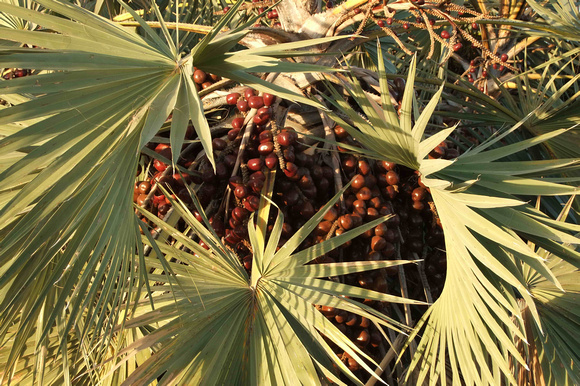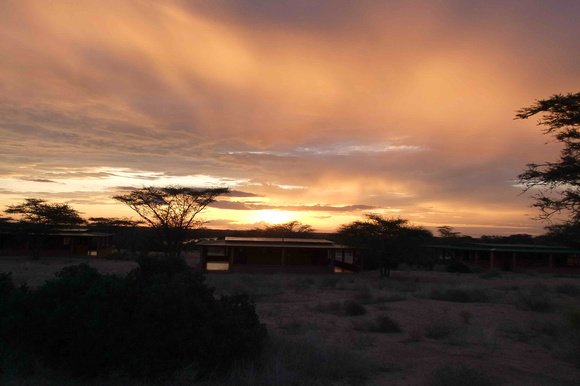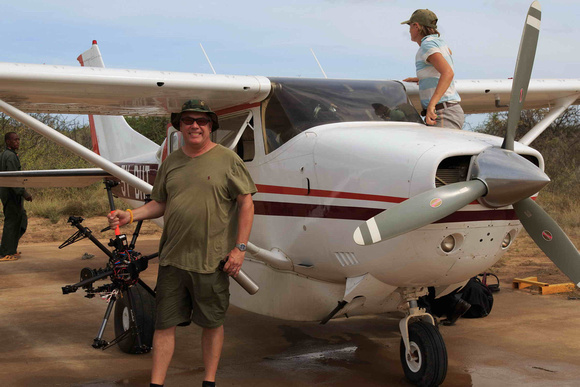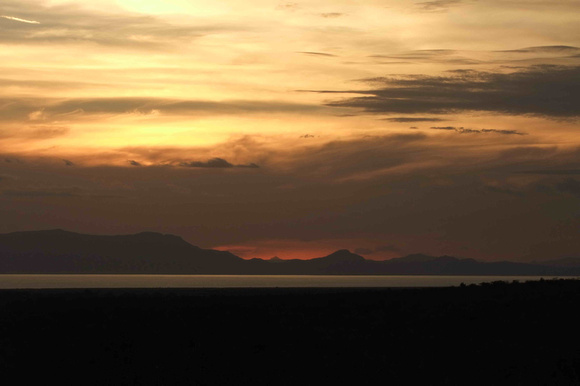Flying Missions in a remote desert: In search of our ancestral trails V
Our arrival at TBI Turkwel Camp was at about three o’clock in the afternoon. Weary, hungry and thirsty, we ate and drank like camels, refueling ourselves after the tough adventures in the morning. And finally, a bit of rest! It was only by then that I found I was mildly sunburned at the back of my neck, where I didn’t apply sunscreen. Not so much a friendly way for the desert to say hello…


According to the schedule, we were going to leave Turkwel the next day and head north to Ileret on the east bank of Lake Turkana where we were going to carry out the second half of our mission. The last day in Turkwel camp! I knew I was going to miss there! It is such an oasis in the middle of the desert, and definitely a paradise for researchers! Shaan Hurley, our computer engineer and photographer from Autodesk, and I decided to have a little dip in the quietly flowing Turkwel River, for the last time of our visit.














Probably it was the remoteness of this wild place that stimulated our satisfaction and joy. There is pretty nowhere more tranquil than Turkwel. The only sound we could hear was from the wind and the flowing river. Completely cut off from the hustle and bustle of civilization. The unfailing beauty of sunset was another plus! Just splendid! We really had good time that day, like little boys.


The next morning, Turkwel amazed us again with a spectacular display. But our schedule didn’t allow us to linger. At about eight in the morning, after packing all the things, our camp manager and pilot Dr. Louise Leakey, Captain Gonzalo Martinez and Shaan escorted the Autodesk copter to the closest airstrip. Ileret is on the eastern bank of Lake Turkana and is further north, almost at the Kenya-Ethiopia border. The fastest way to travel from Turkwel to Ileret is by air, flying over the belt of jade. Alternatively, a road trip would take about 3 days…


Our Pilot Dr. Louise Leakey Photo courtesy of Shaan Hurley, Autodesk
Because of the bulky cargos needed to be transferred, Louise had to fly twice in a day to bring everybody and everything up to the east in a Cessna 206, a six sitter small plane. And I was on the second flight, after Gonzalo and Shaan. The job was very demanding for Louise, being the manager of both Turkwel and Ileret camp.


Central Island of Lake Turkana Photo courtesy of Shaan Hurley, Autodesk
Lake Turkana is the largest desert lake in the world. Flying over it offers an exceptional view of the beauty and exuberance of the life-giving water body. Patches of green and blue represent the flourishing algae, which feed a colossal number of fish in the lake, and eventually people who live on them. Fresh water from the Omo and Turkwel River is the life line, creating river deltas in lush green. Smaller river channels nourish a huge span of bushes and grass, attracting animals of all kinds, including pastoralists and their herds. The landscapes were so green and prosperous at that time that they overturned my previous impression of the same desert.
However, the lake is shrinking because of the increasingly dry climate. Rings of beach lines are clearly visible from the air, defining the prior boundaries of the lake. A dam is being built on the upstream of the Omo River, which may result in a reduction of its in-flow. Lake Turkana, a lake that has witnessed the first steps of human ancestors, a lake that has nourished animals of all kinds, is at risk of drying out…


Gonzalo at Ileret airstrip Photo courtesy of Shaan Hurley, Autodesk
By about three in the afternoon, we were all at TBI Ileret camp, about 5 kilometers from the lake shore.








Although not so much active under the relentless sun, the rich wildlife in the camp still surprised me. Built among thick bushes, the camp is the heaven for a large variety of birds and some small mammals, including a pair of ground squirrels, Xerus rutilus. And what could be more attractive than a small pool of water that even allows baths, plus feasts of millet?


As the day came to an end, our eyes were again spoiled by the magic of wilderness. First the sunset. The diminishing anger of Apollo created the color of an inferno. Then the Milky Way! Stretched across the pitch darkness. With an arch of new moon, hanging low above the silver calmness. A grandeur that only exists in our wildest dreams, but so real in front of us!
Compared to Turkwel, insects in Ileret were even more rampant at night! Some may even fall into our dinner plates or end up in our water bottles. No worry about a low-protein diet… It was there that I had my first taste of a stink bug, of course without notice… It was quite crunchy but the taste was extremely unpleasant…Camp paths became super highways for insects such as ants and beetles. And it was almost a routine to meet some scorpions, spiders and monstrous crickets outside of our tents everyday… Surprisingly, there were toads out there, too. Really a tough place for amphibians!
In a symphony of insect callings, I went to bed, hoping that the missions of the next day will be as smooth as butter. :) (To be continued)
View and download photos of this post: Flying missions; Ileret, Lake Turkana; TBI Turkwel